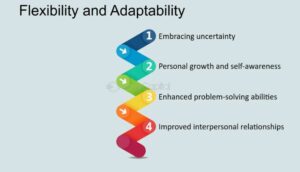
Seamless
Family succession planning is one of the most critical processes for a family business, as it guides the transfer of wealth, leadership, and ownership from one generation to the next. It prepares a new generation of leaders to take over the family legacy and future business interests.
The Importance of Succession Planning
Business survival and continuity will depend almost entirely on succession planning. Otherwise, there can be a leadership gap where power tussle can lead to financial ruin. Planning ahead will minimize these risks by ensuring that whenever a succession is due, a probable successor is ready to take over the management.
Succession Planning Steps
- Acknowledge Possible Successors Early: The first step in the succession plan is to state who may potentially succeed one from among the family or company. This process needs to begin at least a few years before the transition so that there is proper time for correct development and mentorship.
- Developing Leaders: Invest in training and development programs for the succeeding generations of leaders. This can include giving them the necessary skills, experiences, and knowledge to effectively lead the business.
- Establish Clear Structures of Governance: Introduce structured governance through family council, advisory board, or other mechanisms to facilitate the decision-making process and to manage family dynamics. Clear governance structures will foster a stakeholder-appropriate redistribution between both business and family interests and will eliminate many means for further conflict to occur.
- Transparency and Communication: Family members should be kept informed about the succession plans and their roles in it through open and honest communication, Communication builds trust and aligns expectations.
- Legal and Financial Planning: These involve creating ownership structures, tax planning, estate planning, and the few quirks that would jeopardize or undermine a successful transition. Legal and financial advisers can help navigating the maze.
Challenges in Succession Planning
Whether dealing with family dynamics, aligning individual passions with business goals, or preparing potential successors for their future leadership, the entire process of succession is fraught with challenges. It may become hard for the founding generation to leave, so it is always most useful to approach the entire process with delicacy and thoughtfulness.
Playing into Sustainable Investments
A sustainable investment must be incorporated into the succession plan, ensuring the longevity of the family business. Family offices can align their investment strategies with the grand visions of academia in ESG investing, so it contributes toward a legacy.
Cultivating a Culture of Legacy and Innovation
Successful family businesses spanning multiple generations embrace a dual focus on tradition and evolution. With a strong culture of legacy, a family ensures the transmission of its paramount values and principles. At the same time, cultivating innovation propels the business towards a bright future by adapting to and changing with the times and remaining viable and competitive.
Seeking Professional Support
Some families looked outside their own businesses for help with succession planning. These professionals guide the governance structure, conflict resolution, and wealth protection. They can give a family the information necessary to make smart decisions along with a sense of where they want their family to be in the future.
Conclusion
Family business succession planning is a complex enterprise that requires careful thought and active management. With best practices and a commitment to addressing challenges head-on, both generational and other family businesses can make sure that wealth and leadership are transitioned smoothly, maintaining legacies for generations to come.







